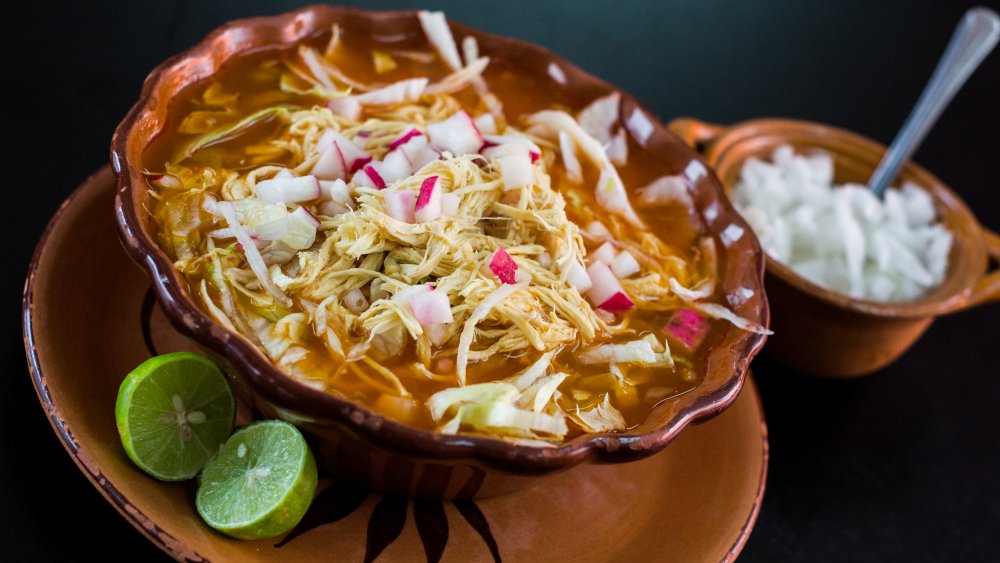The Dark History Behind Pozole
Pozole, while it may not be the kind of thing you can find on the menu of the most popular of quasi-Mexicanfast-food chains like Chipotle and Taco Bell, is a traditional Mexican food that you should not miss. MasterClass calls it "one of those magic dishes with the power to reverse a terrible day, cure your head cold, and brighten the bleakest of weather," while chef Anthony Lamas told NPR, "If you're cold, you're hung over, you've had a long night, pozole is that Latino cure for you in a bowl."
Even if you aren't depressed, ill, or experiencing those deep regrets typical of the day after the night before, pozole is just plain tasty, and is enjoyed by Mexicans on Christmas, New Year's Day, and any other special occasion they can think of to celebrate with this beloved national dish. Pozole is pretty popular in the U.S. as well, perhaps due to the fact that pozole, unlike menudo, tends to be made with either pork or chicken as opposed to the less-palatable (to most of us) tripe, A.K.A. cow's stomach.
Well, that's what pozole is made if these days, at least. It would be a lot less popular, however, if it was still made with the original recipe, at least the one legend accords it.
How pozole used to be made
The Mazatlan Post reveals the true — and truly horrific — history behind what they call "one of the emblematic dishes of our [Mexican] gastronomy." According to that newspaper's account, pozole was known to the Aztecs as Tlacatlaolli, Nahuatl for " husked corn of men." And it contained just that — husked corn (pozole, according to MasterClass, means hominy) and, yes, men.
It was a sacred dish that was offered to the Aztec god Xipe Totec in a ceremony known as Tlacaxipehualizthli, and a preceding part of the ceremony provided the main ingredient — and no, the festivities had nothing to do with picking corn. Instead, they involved a warrior who had been captured in battle and was then tied to a stone, and forced to fight to the death (his) against armed Aztec warriors. Once he inevitably succumbed, he was then tossed into the stewpot, and used to prepare a ceremonial pozole which was eaten by the Aztec priests and the king, as well as by the warriors who had, um, slaughtered the meat.
That's all in the long-distant past, though, and today this spicy soup has no shady ingredients. Well, unless you eat a pozole variant prepared in certain seaside locations, since instead of pork or chicken, it might be made with (shudder) sardines! Even these dubious fishies, though, are still an upgrade over pre-Columbian pozole, so at least there's that.

